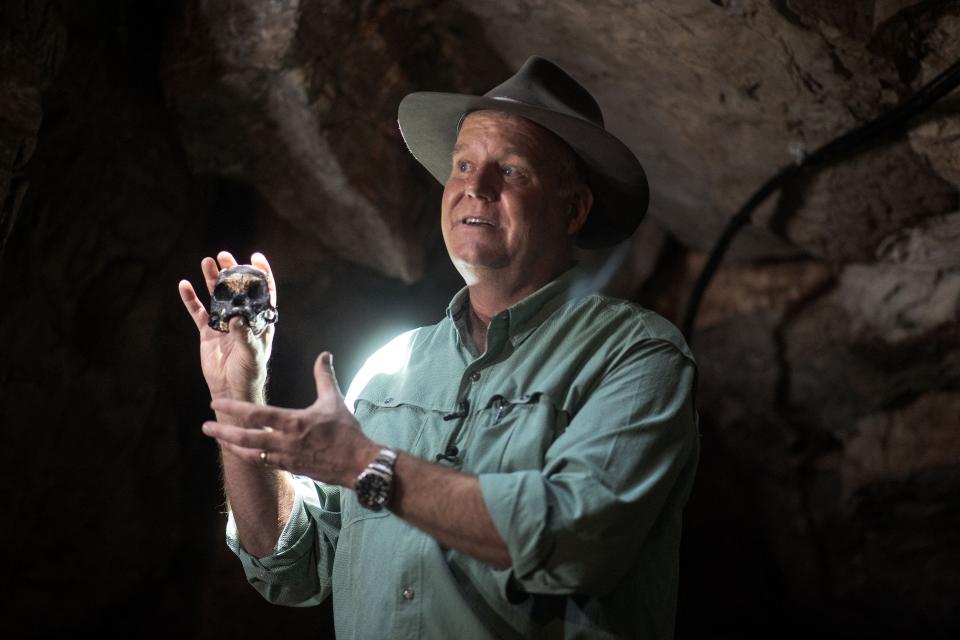An extinct species buried their dead and carved symbols 100,000 years before humans. The findings challenge our understanding of human evolution, researchers say.

An extinct species called Homo naledi buried their dead 100,000 years before humans.
These actions were previously thought to be associated with larger-brained species.
The findings challenge previous assumptions about the progress of human evolution.
Researchers have found that an extinct human species buried their dead and carved symbols on cave walls 100,000 years before humans, challenging previous assumptions about human evolution.
The species, called Homo naledi, had brains about one-third the size of a modern human's, according to CNN.
Until now, these behaviors had only been associated with larger-brained species such as Homo sapiens and Neanderthals.
The research is laid out in three studies accepted for publication in the journal eLife, CNN said.
"These recent findings suggest intentional burials, the use of symbols, and meaning-making activities by Homo naledi. They indicate that this small-brained species of ancient human relatives were performing complex practices related to death," paleoanthropologist Lee Berger said in a statement per CNN.
Berger was the lead author on two studies, a co-author on the third, and National Geographic Explorer in Residence.
"That would mean not only are humans not unique in the development of symbolic practices, but may not have even invented such behaviors," he said.
Homo naledi fossils were first discovered in the Rising Star cave system in South Africa in 2013, and Berger and his team have continued to explore the caves ever since.
The team found the remains of Homo naledi adults and children laid to rest in the fetal position and covered in soil, which pre-date any known Homo sapiens burials by at least 100,000 years.
Homo naledi walked upright and manipulated objects by hand like humans, Berger said, but they were shorter, thinner, had smaller heads, and were more powerfully built, per CNN.

The team also found symbols carved into the cave walls, which they described as resembling hashtags and other geometric symbols, according to CNN.
It is unclear what the symbols mean and whether the species used them to communicate.
The cave art was estimated to be between 241,000 and 335,000 years old.
"What we can say is that these are intentionally made geometric designs that had meaning for naledi," Agustín Fuentes, National Geographic Explorer, who was lead author on the third study, said, per CNN.
"That means they spent a lot of time and effort and risked their lives to engrave these things in these places where they're burying bodies."
He said that the discovery challenges assumptions about the progress of human evolution.
"The challenge here, then, is that we now know that Homo naledi, in addition to Homo sapiens and Neanderthals and Denisovans and a few others, were engaging in the kind of behavior that we, even just a few decades ago, thought was unique to us," he said.
Read the original article on Business Insider

 Yahoo Sports
Yahoo Sports 